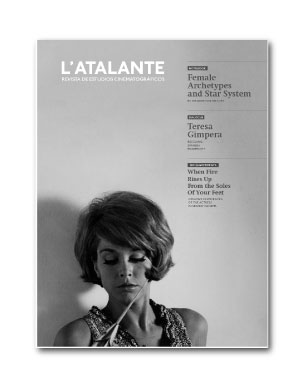Keywords
- Stardom,
- Voice,
- Gender,
- Dubbing,
- Cecilia Roth
- Geraldine Chaplin. ...More
How to Cite
Abstract
Most discussions of archetypes in cinema, especially in relation to female performers, begin with the linkage of physical features with specific film roles. In her pioneering work on female film stars, Molly Haskell writes of the “tyranny of type,” embodied in the figures of the blond and innocent virgin and dark haired, seductive vamp. Less studied in discussions of film stardom and performance is the role of voice and vocal types. In Spain the associations between vocal type and archetypes have long been codified and enforced in the nation’s potent dubbing industry. The result has been the imposition of a strict vocal orthodoxy and demonstrable standardization and typification of voices, especially along gender lines, that extends from dubbed foreign language films to Spanish original productions. In line with normative vocal conventions, female voices in particular were held to a narrow range, with a preference for a smooth and polished sound from which any excess or noise has been eliminated. Nevertheless, the Spanish careers and filmographies of Cecilia Roth from the 1970s through the 1990s and Geraldine Chaplin in the 1960s and 1970s are revealing with respect to the shifting attitudes toward vocal diversity in cinema and its role in the telling of complex stories.
Downloads
References
Arbide, J. (1976, 21 de julio). Notas y apuntes, <em>Cría cuervos. Sur/Oeste</em><br>
Ávila, A. (1997). <em>La historia del doblaje</em>. Barcelona: CIMS.<br>
Ávila, A. (2000). <em>Así se crean doblajes para cine y televisión.</em> Barcelona: CIMS 97.<br>
Brasó, E. (1974). <em>Carlos Saura</em>. Madrid: Taller Ediciones JB.<br>
<em>Cecilia Roth</em>. Extraído de «www.eldoblaje.com»<br>
Chion, M. (1999). <em>The Voice in Cinema</em>. Nueva York: Columbia University Press.<br>
Ciller, C., Palacio, M. (2001). Cecilia Roth en España. <em>Signa. Revista de la Asociación Española de Semiótica, 20</em>, 335-358.<br>
D’Lugo, M. (1991). <em>The Films of</em>
<em>Carlos Saura</em>: <em>The Practice of Seeing. </em>Princeton: Princeton University Press.<br>
Dolar, M. (2006). <em>A Voice and Nothing More</em>. Cambridge, MA: MIT Press.<br>
Duprat de Montero, A. (2014). Les voix des héroïnes de Geraldine Chaplin dans le cinema de Carlos Saura ou la mise en lumière d’une collaboration artistique. <em>Entrelacs, 11</em>, 1-12. Extraído de <http://entrelacs.revues.org/912><br>
Emma Penella (1958), <em>Idolos del cine</em>, <em>24</em>, Madrid: Prensa Gráfica.<br>
Ehrick, C. (2015). <em>Radio and the Gendered Soundscape</em>. Nueva York: Cambridge University Press.<br>
Galán, D. (2003). El puñetero «ceceo». El español en el mundo. La lengua española en el cine. <em>Centro Virtual Cervantes, Anuario 2003. </em>Extraído de <em><</em>http://cvc.cervantes.es/lengua/anuario/anuario_03/galan/p03.htm><br>
<em>Geraldine Chaplin</em>. Extraído de «www.doblaje.com»<br>
Gil de la Serna, A. (1958, 10 de mayo). La voz de Emma Penella. <em>Radiocinema</em>
<em>XX</em>(487).<br>
Gubern, R., Vernon, K.M. (2012). Soundtrack. In T. Pavlovic and J. Labanyi (eds.) <em>A Companion to Spanish Cinema </em>(pp. 370-388). Nueva York: Wiley-Blackwell Publishing.<br>
Guerra, M., et al. (1998). <em>Cecilia dice… Conversaciones con Cecilia Roth</em>. Huelva: XXIV Festival de Cine Iberoamericana de Huelva.<br>
Haskell, M. (2016). <em>From Reverence to Rape: The Treatment of Women in the Movies</em>. Chicago: University of Chicago Press.<br>
Hernández Les, J.A. (2013). Carlos Saura y el cine (1959-1983). In C. Rodríguez Fuentes (ed.) <em>Desmontando a Saura </em>(pp. 127-143). Barcelona: Luces de Gálibo.<br>
Hidalgo, M. (1981). <em>Carlos Saura</em>. Madrid: Ediciones JC.<br>
Hija de Charlot, nieta de O’Neill. Geraldine por libre (1974, February 11). <em>Arriba</em>.<br>
Ibañez, J.C. (2013). Memory, Politics and the Post-Transition in Almodóvar’s Cinema. In M. D’Lugo, K. Vernon (eds.) <em>A Companion to Pedro Almodóvar </em>(pp. 153-175). Malden, MA: Wiley Blackwell.<br>
Kinder, M. (2013). Re-envoicements and Reverberations in Almodóvar’s Macro-Melodrama. In M. D’Lugo, K. Vernon (eds.) <em>A Companion to Pedro Almodóvar </em>(pp. 281-303). Malden, MA: Wiley Blackwell. <br>
Lippi-Green, R. (2012). <em>English With an Accent</em>. Nueva York: Routledge.<br>
López Sánchez, L. (1976, January 28). Grande y bella creación de Carlos Saura. <em>ABC</em>.<br>
Manzano, J. (1976, March 7). Geraldine no cría cuervos. <em>Arriba Dominical</em>, 25-26.<br>
Naficy, H. (2001). <em>An Accented Cinema</em>. Princeton: Princeton University Press.<br>
Nornes, A.M. (2007). <em>Cinema Babel</em>. Mineápolis: University of Minneapolis Press.<br>
Olid, F. (1971, 16 de octubre). Gerarda Chaplin. <em>Madrid</em>.<br>
Oms, M. (1981). <em>Carlos Saura</em>. París: Edilig.<br>
Película americana para Geraldine (1978, June 26). <em>Pueblo</em>.<br>
Sánchez Vidal, A. (1988) <em>El cine de Carlos Saura</em>. Zaragoza: Caja de Ahorros de la Inmaculada. <br>
Shingler, M. (2012). <em>Star Studies. </em>Londres: BFI.<br>
Silverman, K. (1988). <em>The Acoustic Mirror.</em> Bloomington: Indiana University Press.<br>
Van Leeuwen, T. (2009). A Semiotics of the Voice. In G. Harper, R. Doughty, J. Eisentraut (eds.)<em> Sound and Music in Film and Visual Media </em>(pp. 425-436). Nueva York: Continuum.<br>
Vernon, K. M. (2016). The Voice of Comedy: Gracita Morales. In D. Albritton, A. Melero Salvador, T. Whittaker (eds.).<em>Performance and Spanish Film </em>(pp. 76-95). Manchester: Manchester University Press.<br>
Vernon, K. M. (2019). Crossing the Sound Barrier: <em>Telefilms</em> and Acoustic Flow in Early Spanish Television. <em>Journal of Spanish Cultural Studies</em>
<em>20(3)</em>, 271-286.<br>
Whittaker, T., Wright, S. (2017) (eds). <em>Locating the Voice</em>. Oxford: Oxford University Press.<br>
Whitman-Linsen, C. (1992). <em>Through the Dubbing Glass</em>. Fráncfort del Meno: Peter Lang. </p>

